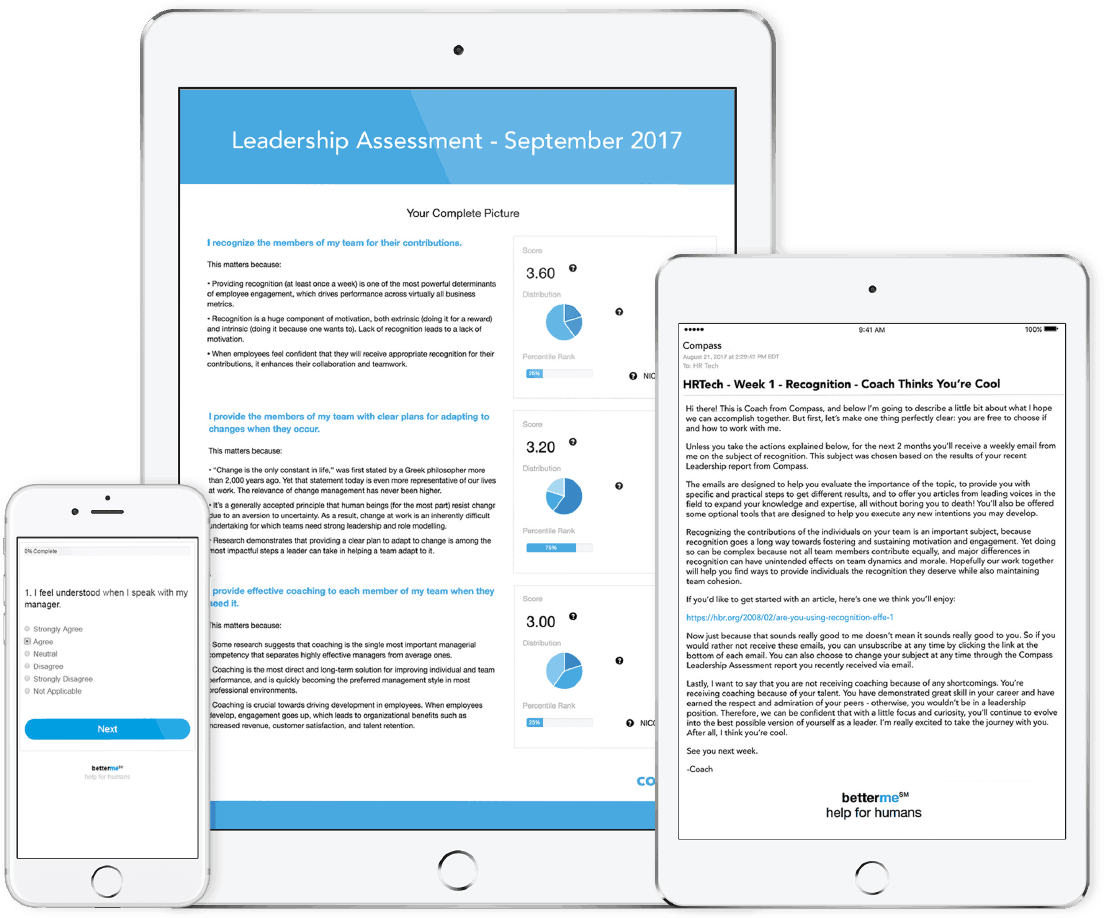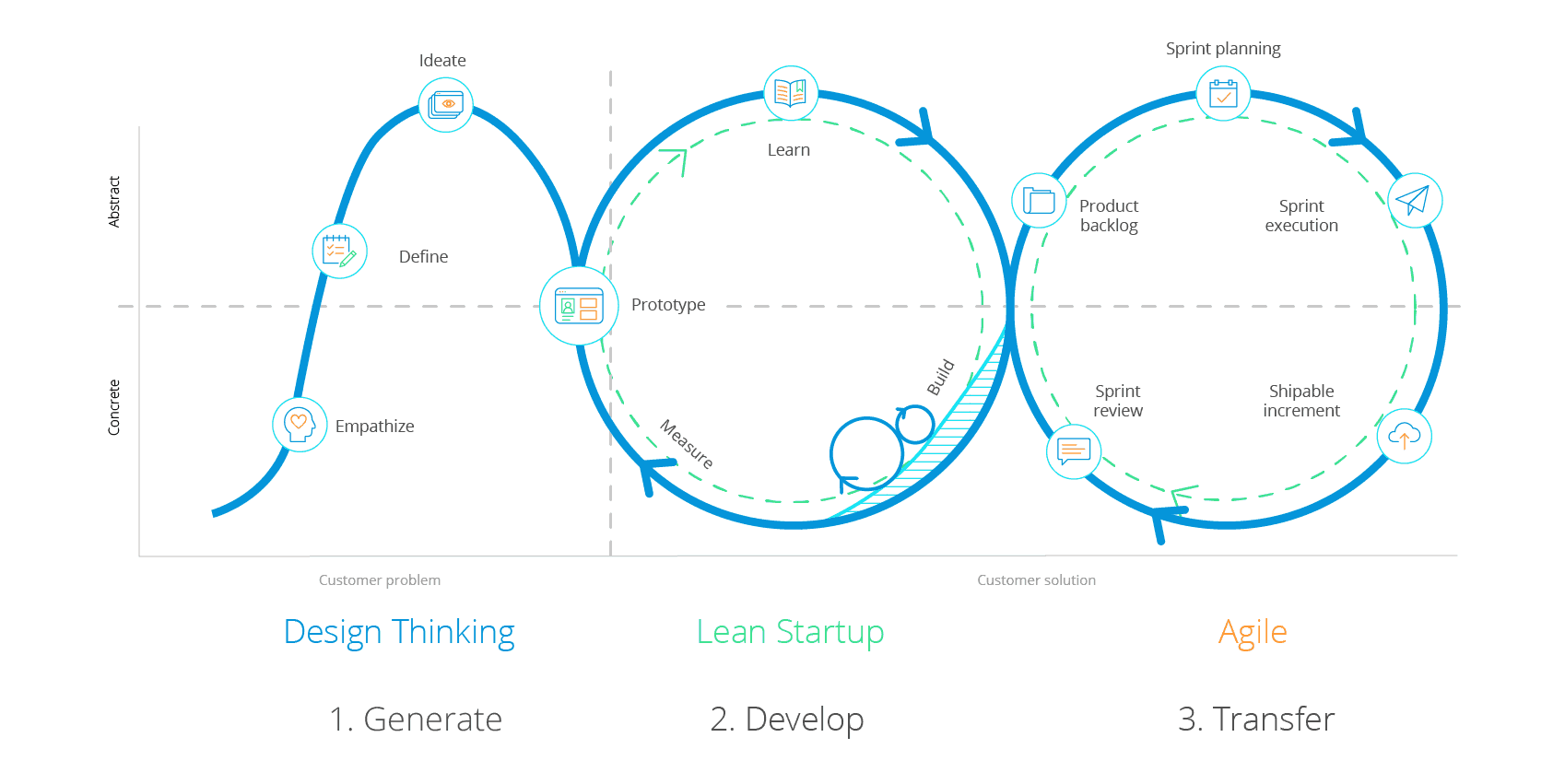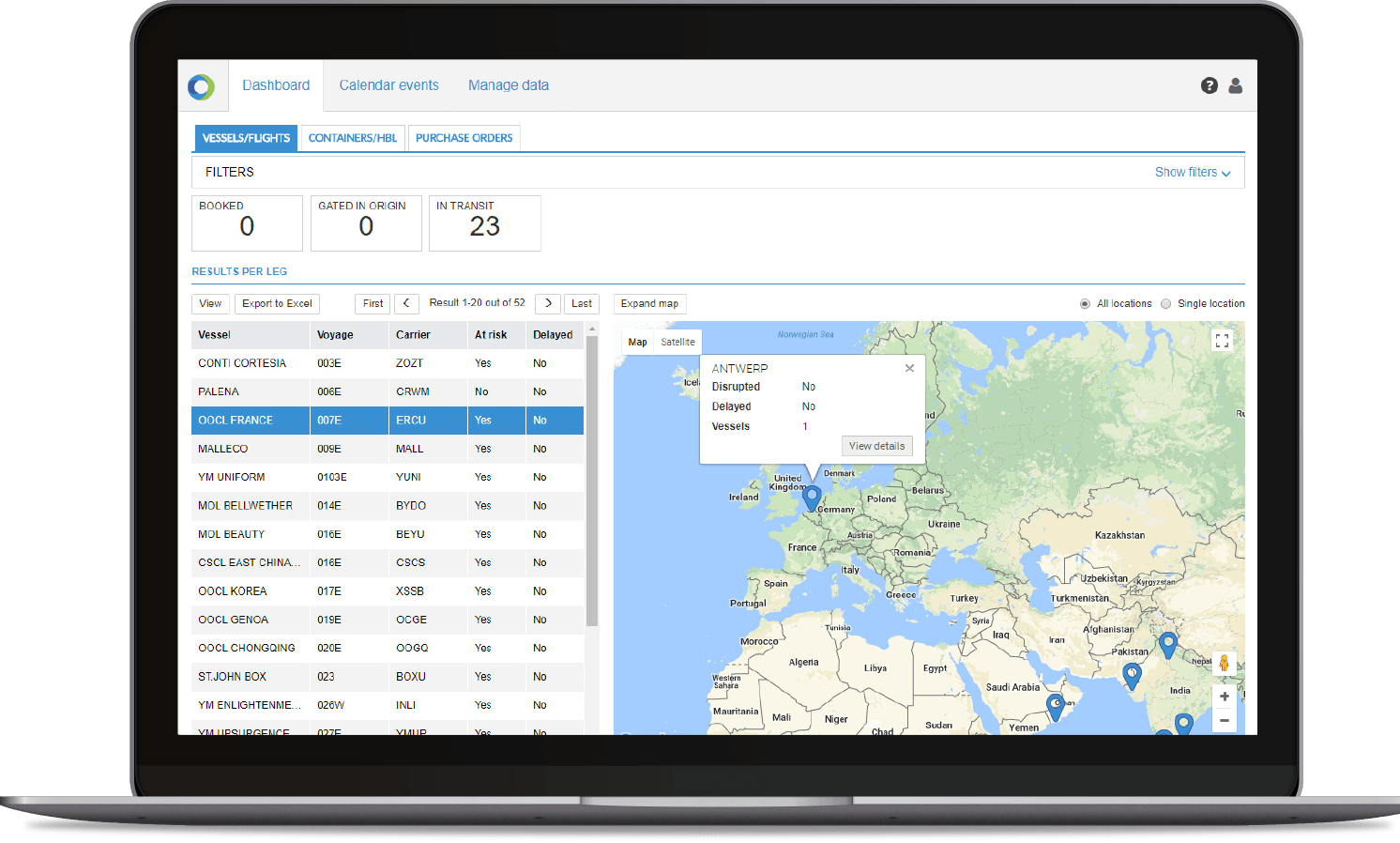Getting Started with Design Thinking: Advice from ADP and Damco

There is a lot of talk in the press today about design thinking. In fact, CIO magazine recently called design thinking nothing less than the secret to digital success. Enterprises who haven’t yet embraced the iterative, user-centric approach may be wondering where and how to get started. In a the webinar, The Secrets of Design-Driven Enterprises, Jerome Gouvernel, Division Vice President at ADP, and Bob de Graaf, User Experience Strategist at Damco, shared the following best practices for implementing design thinking.
1. Practice empathy and put humans first
Design thinking is all about empathy and getting inside the head of the users to understand their behavior and motivations. When discussing the process at ADP, Jerome explained that historically that HCM software was designed for administrators, but with the effort to engage more with end users it is absolutely critical to have a lot more empathy for how the user feels and their internal and mental state when they use the product. Users describe their own problem, not the fundamental underlying problem. When ADP dug deeper and put themselves in the user’s position, they realized that the problem goes deeper than expressed.
Help humans first – If a solution is designed to help a department or workflow, we step away. Is there a value for the human first?” – Jerome Gouvernel, Division Vice President at ADP
At ADP, Jerome has introduced the practice of behavioral economics to put human experience at the center of the product. Behavioral economics attempts to understand intrinsic motivations to use or not use a product. This thought process facilitates the empathy aspect of design thinking. Traditional user research does not address the fundamental problem. It’s superficial and doesn’t truly address usability challenges. An example of a traditional approach to user research is to bring in external users, introduce them to a product in a controlled environment, and gather results. The usability testing in this scenario is superficial and skewed because you create an artificial environment. The alternative is to understand usability in a real-world environment.

At ADP, the design process is about intrinsic motivation and how to tap into that. The process goes beyond the aesthetics of the product or app and focuses on usability as the next step. With the Compass app, they use email as the primary channel versus creating a separate app, in order to keep the focus on the delivery of content and less about aesthetics. Jerome emphasizes the need to tap into the usefulness in support of the underlying motivation and the value associated with this. Behavioral economics creates a more holistic way to think about design thinking.
A great example of where listening to users has led to a valuable and successful application is during the process of creating ADP Compass, a leadership measurement, and enablement tool. By setting up workshops and truly listening to the user’s feedback, the team at ADP found that what the average manager at ADP needs is help in having better leadership skills, not to be judged. They built out the solution through these concepts of enabling and helping people. They also learned that less than 10 percent of people will actually go and sign up for a training course because it is deemed too much work and not in the here and now. Using behavioral economics’ concept of a nudge, they decided to push the training materials directly to the user through the app. That changed the level of usage of the app from less than 10 percent to over 80 percent.
Get out of the building and spend time with users. Take your customer on board when coming up with a solution.” – Bob de Graaf, User Experience Strategist at Damco
2. Combine design thinking and agile
Gartner and others are highlighting the natural synergy between design thinking, as a method of problem identification, and agile, as a method of problem-solving. According to Bob, design thinking and agile go hand in hand because both are iterative. At Damco, they have embraced agile and have set up the organization in multi-disciplinary product teams to enhance focus and collaboration between disciplines (business, design and technology). Being Agile and working in short iterations (sprints) allows them to validate early and often which in turn enables them to deliver real value and eliminate ‘waste’ (time spent on unnecessary work). Prototyping allows all stakeholders to have a shared understanding of solutions and eliminates the need for unmanageable requirements documents.

During a first real co-creation with a customer, Damco introduced both design thinking and agile for development which helped them save time by focusing on understanding the larger business process and underlying problems first, before moving into a solution based on long lists of requirements.
Design thinking is creating the recipe; agile is doing the cooking.” – Bob de Graaf, User Experience Strategist at Damco
ADP adopted agile as a core methodology six years ago. Jerome believes that the fundamental value of agile is making sure you’re checking with future users early and often, so you don’t waste time. He also suggests that there are too many rituals and too much administration within the traditional agile process. His team within ADP follows the original tenet of agile: involve users every step of the way. For them, this takes the form of field testing. However, instead of building prototypes, they build real products directly on the Mendix platform in 1-2 weeks. As soon as they have a working product, they deliver it to the field, to real users, and observe their habits. From their observations, they can understand whether to drop the idea altogether or carry on.
3. Focus less on the technology and more on the product you are creating
Jerome advised that the less you need to focus on the technology, the more you can focus on design thinking. The secret to launching successful products is not the technology; it’s what the product does. Technology’s goal should be to minimize distractions and complexity—like how to make the old stuff work, and scale—so the team is freed to focus on end users.
Technology is critical but not for its own sake. Mendix abstracts the technology stack challenges you typically encounter in the development process. This means that we have more time to focus on building a workable solution for users.” – Jerome Gouvernel, Division Vice President at ADP
Bob emphasized that there are three ingredients to design thinking: business objectives, user needs, and enabling technology. He suggested that it is key to recognize technology as an enabler and not something which is leading. Design thinking should be used to discover what would really benefit your customer needs as well as your own business goals, and subsequently, technology should be challenged to put those ideas in practice, in that order.
The key is that technology is the enabler but should not dictate the solution.” – Bob de Graaf, User Experience Strategist at Damco
4. Iterate with real users
At Damco, the development team works iteratively with real users and validates constantly. When involving users directly, they can feel they have a real impact on the outcome and will take ownership of the decisions made. For example, Damco had a customer that needed a solution to help with sourcing and allocating items that they sell to the right ports and carriers at the right time, satisfying their customers’ needs as well as optimizing their own inventory. Typically, people work with lots of Excel sheets and emails. Damco wanted to explore automating this process and centralizing it in an easily accessible tool for all relevant stakeholders.

The expectation from the customer was to provide a list of requirements that Damco would then turn into a solution. What they actually did instead was meet face-to-face to start off with a ‘Sprint 0’ which is actually the first phase of Design Thinking to try and understand the users and validate the problem (Empathize, Define). By working closely with real users, Damco and the customer were able to continue with the next steps of design thinking, ideate and prototype, and are quickly progressing toward an MVP of the solution.
Seeing and interacting with something in person really gets feedback going, but within the agreed scope.” – Bob de Graaf, User Experience Strategist at Damco
At ADP, they have found that when working with end users, most have been exposed to development teams before and therefore come with long lists of requirements, which takes away from the empathetic approach. The team resets expectations with a three-hour, in-person workshop. The workshop includes design thinking and agile principles and focuses on solving one problem at a time. By the end of the workshop, the users are completely on board. The trust cycle starts because ADP is able to deliver a working product in just 1-2 weeks using the Mendix platform. Instead of traditional prototyping, ADP does live development.
We want to give a product to real users and observe their usage.” – Jerome Gouvernel, Division Vice President at ADP
5. Be prepared to change your mind
Jerome suggested that within the design thinking process, it is important to understand the concept of “strong opinions, weakly held”. This means that you should come in with some idea of the types of solutions that you want to build, have a strong opinion, but as soon as you see evidence that it’s wrong, change it.
For example, when creating the ADP Compass application, the ADP team tested working versions of the tool across large populations of users and did not always get the feedback they expected. They continued to iterate until they came to a product that the user-valued. After three months of iterating and changing opinions based on real user feedback, they were ready to roll the product out to ADP employees worldwide. Listening closely to users and being willing to change their mind when there is user evidence that it is wrong, led ADP to create a successful application used within ADP for the last two years. The application is so successful that ADP commercialized the solution based on requests from customers.